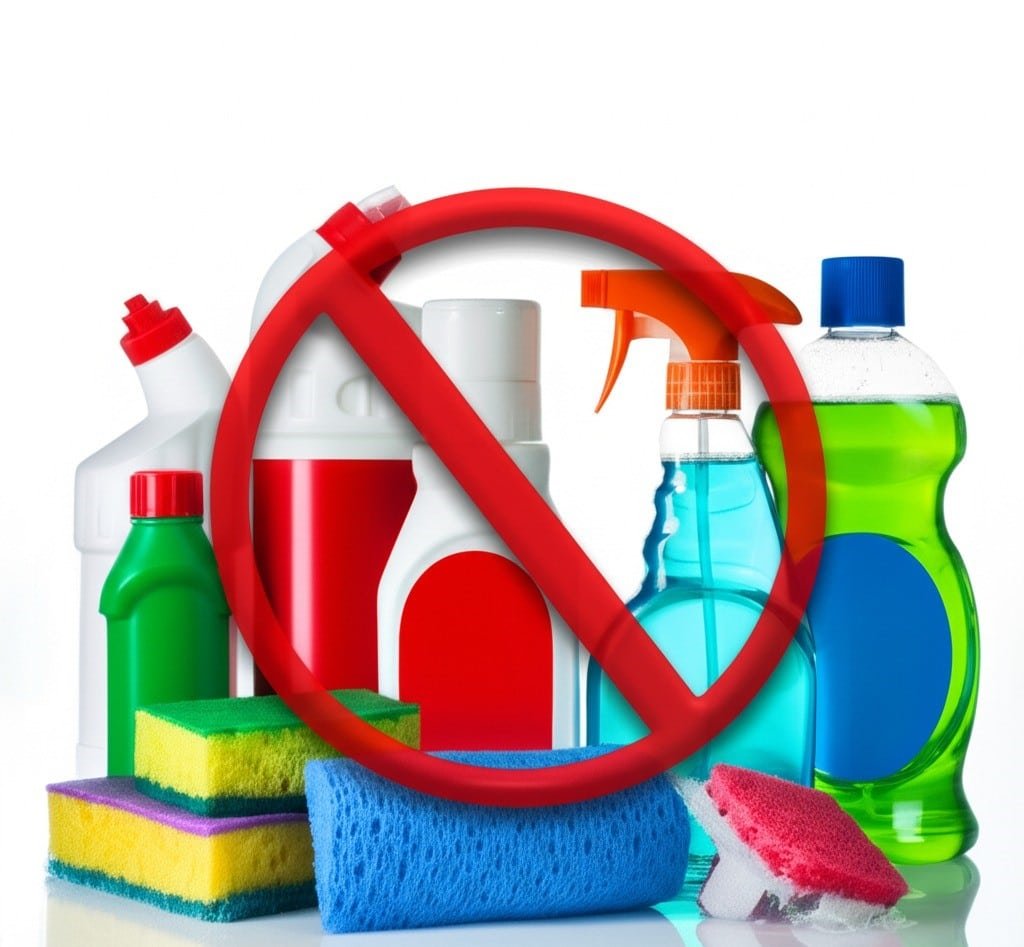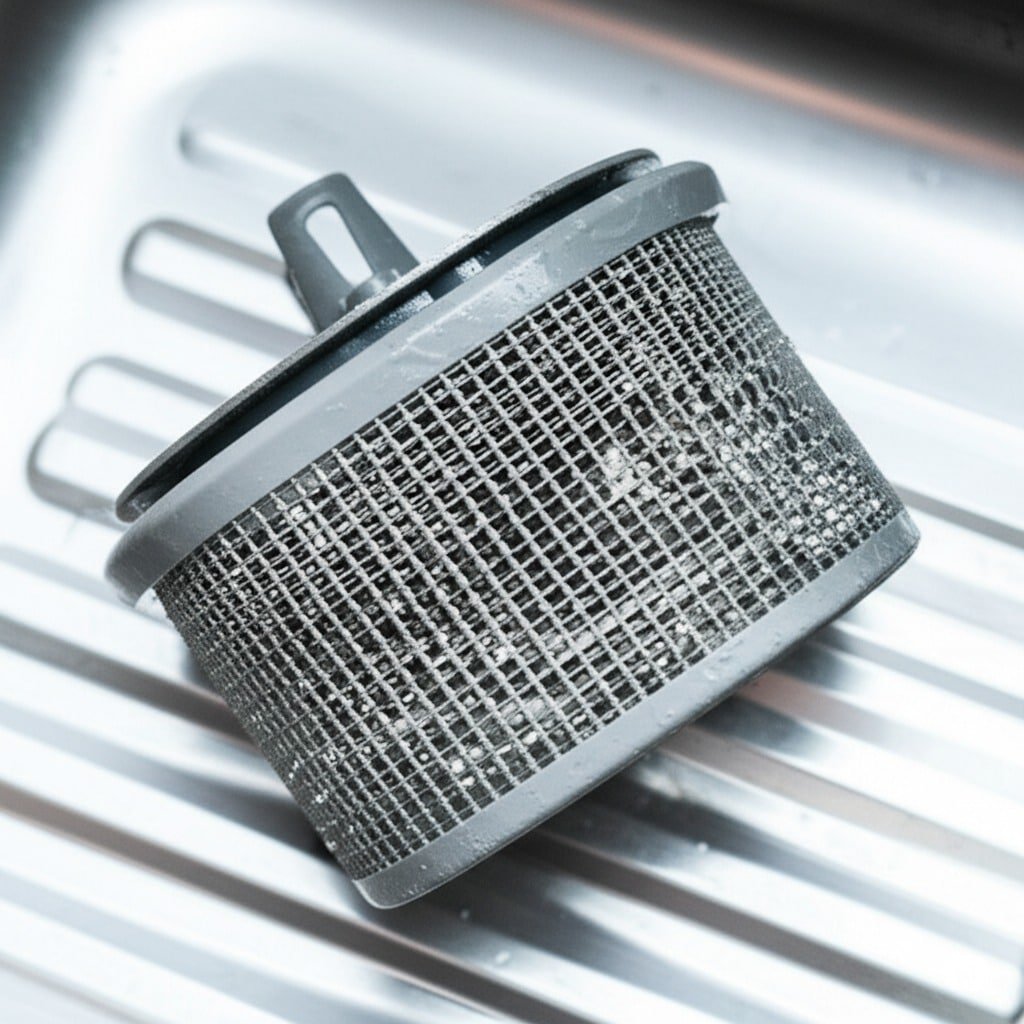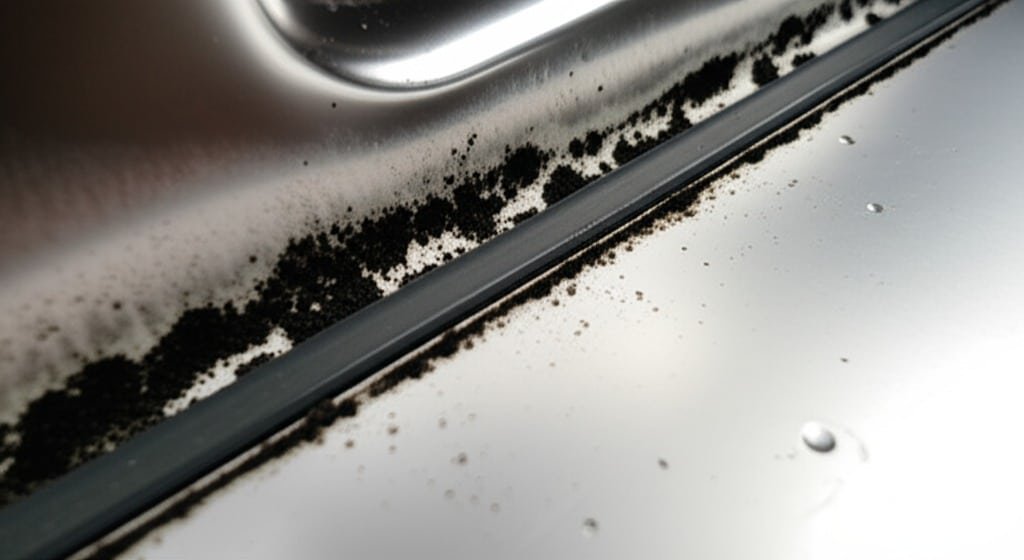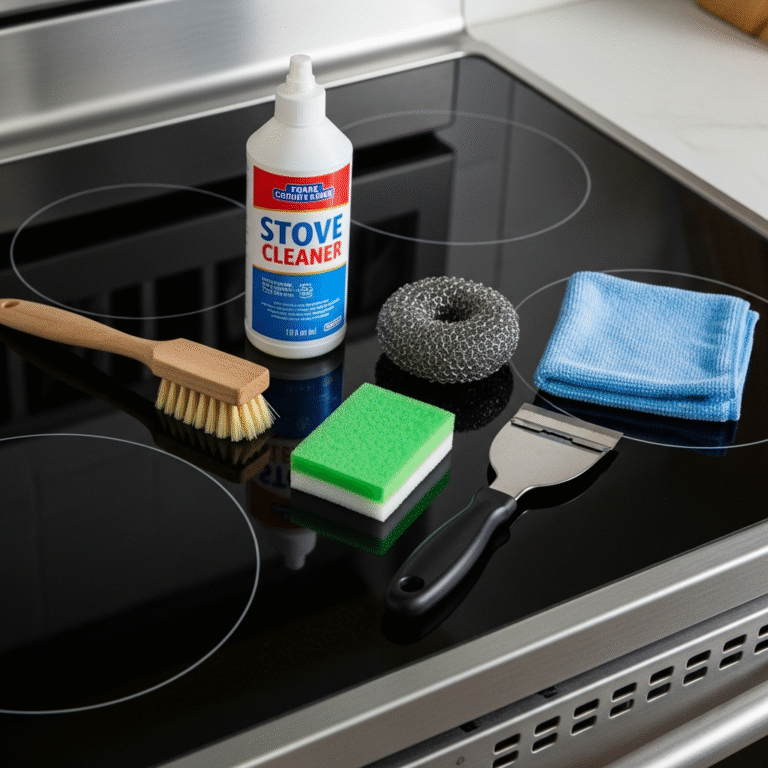A dishwasher, in its daily work, cleans plates, glasses, and cutlery. It processes food residues, grease, and detergents. Over time, these elements do not simply vanish. They accumulate. Food particles, soap scum, and the minerals from hard water deposit themselves on the internal surfaces, within the filter, and on the spray arms. This buildup leads to several common issues: dishes emerging with cloudy spots or a film, an unpleasant odor emanating from the appliance, and a general decline in the machine’s efficiency. The very appliance designed to clean becomes a source of uncleanliness. Its performance diminishes, and its lifespan can be inadvertently shortened by neglect. Maintaining the cleanliness of the dishwasher itself is as crucial as loading it correctly.
1001 Uses For Vinegar
For this internal cleaning, white distilled vinegar stands as an effective and straightforward solution. It is a natural product, widely available, and remarkably versatile for household cleaning. Its primary active component, acetic acid, is a mild acid that possesses properties invaluable for dishwasher maintenance. Acetic acid works by dissolving mineral deposits, such as limescale and hard water stains, which often manifest as a white, chalky film. It effectively cuts through grease and helps to break down stubborn soap scum, which adheres to surfaces over time. Beyond its dissolving capabilities, vinegar is also a natural deodorizer. It neutralizes rather than masks unpleasant odors, leaving the dishwasher interior smelling fresh and clean without harsh chemical fragrances. Furthermore, it offers a gentle antimicrobial action, inhibiting the growth of mold and mildew that can thrive in damp environments. Unlike many commercial chemical cleaners, white distilled vinegar is non-toxic, safe for use around food preparation areas, and poses no risk to household members or pets. It is also environmentally friendly, biodegrading without leaving harmful residues. Its non-corrosive nature ensures it is safe for the various components of a dishwasher, including stainless steel interiors, plastic parts, and rubber seals, provided it is used as directed. The combination of its cleaning power, deodorizing ability, safety, and cost-effectiveness makes white distilled vinegar an ideal choice for the regular deep cleaning of a dishwasher.
1.Remove All Items
Before initiating the vinegar cleaning cycle, proper preparation is essential to maximize effectiveness. The first step is to ensure the dishwasher is completely empty. Remove all dishes, glasses, cutlery, pots, and pans. Nothing should remain inside the racks or in the utensil baskets. This allows the vinegar solution to circulate freely and access all internal surfaces without obstruction. Once emptied, the next critical step involves inspecting and manually cleaning the dishwasher’s filter and drain area. This component, typically located at the bottom of the dishwasher, traps larger food particles and debris to prevent them from recirculating or clogging the drain pump. Depending on the dishwasher model, the filter may be a single removable cylinder or a multi-part assembly. Consult your appliance’s user manual for specific instructions on how to access and remove it, as designs vary. Once removed, rinse the filter thoroughly under hot running water. You will often find accumulated food scraps, labels from containers, small bone fragments, or even broken glass shards. Use an old toothbrush or a small scrub brush to dislodge any stubbornly adhering food particles, grease, or slimy buildup. Pay close attention to the mesh screens and any crevices where debris can hide. For more tenacious grime, a small amount of dish soap can be used during this manual scrubbing. After cleaning, ensure the filter is completely clear and free of obstructions before carefully reinserting it back into its housing, ensuring it is properly seated and locked according to your dishwasher’s design. This manual pre-cleaning of the filter is vital because a clogged filter significantly impedes water circulation and can prevent the vinegar solution from effectively reaching all areas. Additionally, take a moment to manually wipe down accessible areas like the edges of the door, the rubber gaskets or seals around the door frame, and the lower spray arm if easily reachable. Food debris and greasy buildup often accumulate in these spots. A damp cloth, possibly moistened with a little diluted white vinegar, can be used for this preliminary wipe-down, addressing visible grime before the main cycle begins. This foundational cleaning ensures the vinegar cycle focuses its power on the more inaccessible internal workings.
With the dishwasher prepped, it is time for the main vinegar cleaning cycle. First, select the appropriate container for the vinegar. An open, dishwasher-safe bowl or a measuring cup made of glass or ceramic is ideal. Avoid using plastic containers that might absorb odors or stain. The key is that the container should be open at the top, allowing the vinegar’s vapors to disperse throughout the dishwasher cavity as well as allowing the liquid to mix with the wash water. Pour approximately two cups of white distilled vinegar into this open container. This specific type of vinegar, clear and typically containing 5% acetic acid, is crucial. Other types, such as apple cider vinegar, should be avoided because their color can potentially stain the dishwasher’s interior, and their sugar content might leave a sticky residue. Once the vinegar is in the container, place it upright on the top rack of the empty dishwasher. The top rack placement ensures that the vinegar is introduced to the wash cycle from a higher point, allowing it to distribute effectively throughout the entire system. Next, close the dishwasher door.

2.Be Careful With the Mixtures
Before starting the cycle, it is imperative to ensure that no dishwasher detergent, rinse aid, or any other cleaning product is present in their respective dispensers. The vinegar cycle must be run independently. Mixing vinegar with certain cleaning agents, particularly chlorine bleach, can produce dangerous, toxic fumes and should always be avoided. Select the hottest and longest wash cycle available on your dishwasher. Common cycle names include “Heavy Duty,” “Sanitize,” or “Pots and Pans.” The elevated water temperature significantly enhances the effectiveness of the vinegar’s acetic acid, allowing it to better dissolve mineral deposits, cut through grease, and sanitize the interior. Once the cycle is selected, start the dishwasher. During the cycle, the hot water will mix with the vinegar, creating a powerful acidic solution that circulates throughout the dishwasher’s internal components, including the pump, spray arms, and hoses. This solution will work to dissolve limescale, hard water stains, soap scum, and any lingering grease. The strong vinegar odor may be noticeable during the cycle, but it is temporary and indicates the cleaning action is taking place.
Upon the completion of the vinegar cycle, the initial cleaning is done, but a thorough final inspection and potential additional steps are beneficial. Once the dishwasher has cooled down, open the door and visually inspect the interior. You should notice a significant improvement: surfaces that were cloudy or spotty from mineral deposits should now appear clearer and shinier. Any unpleasant odors should be gone, replaced by a fresh, clean scent, though a faint, temporary vinegar smell might linger immediately after the cycle. While the vinegar cycle addresses the internal mechanisms, certain areas might still benefit from a quick manual wipe-down. Pay particular attention to the rubber gaskets and seals around the dishwasher door. These areas can sometimes accumulate grime, food particles, and even mold or mildew, which the circulating water may not fully dislodge. Use a clean, damp cloth, possibly with a small amount of diluted vinegar or dish soap, to wipe these seals thoroughly. Also, inspect the areas around the detergent dispenser and rinse aid dispenser for any residue buildup and wipe them clean. If the vinegar scent is still pronounced after the cycle, or if you simply prefer to ensure all traces of vinegar are rinsed away, you can run an additional short rinse cycle, or even a light wash cycle without any additives. This extra rinse will flush out any remaining vinegar residue, leaving the dishwasher entirely neutral. This post-cycle attention to detail ensures every part of the dishwasher is clean and ready for its next load of dishes.

3.Dishwasher Filter
Effective dishwasher maintenance extends beyond the occasional vinegar cycle; it involves consistent attention to key components. The filter, as previously mentioned, is paramount. Despite the vinegar cycle, continuous manual cleaning of the filter is essential, ideally on a weekly or bi-weekly basis, depending on how frequently the dishwasher is used and the types of food residues processed. Many modern dishwashers have a self-cleaning filter system, but even these benefit from occasional manual inspection. For those with manual filters, regular removal and thorough scrubbing under hot water with a brush are crucial to prevent the accumulation of fine food particles, grease, and mineral deposits that can lead to odors and reduced cleaning efficiency. If neglected, a clogged filter forces the dishwasher to work harder, reducing its lifespan and increasing energy consumption.
The spray arms are another critical area for ongoing maintenance. These rotating components, typically one in the middle and one at the bottom, distribute water throughout the dishwasher during the wash and rinse cycles. Over time, the small holes, or nozzles, in the spray arms can become clogged with hard water deposits, tiny food particles, or mineral buildup. When these nozzles are blocked, the water jets are impeded, leading to uneven cleaning and dishes emerging with unwashed spots. Regularly inspect the spray arms for visible blockages. If you find any, use a small wire, a toothpick, or even a straightened paperclip to carefully poke through and clear the obstructed holes. In some dishwasher models, the spray arms can be removed for more thorough cleaning, allowing you to flush them under a faucet to dislodge internal debris. Ensure they rotate freely after reinstallation.

4.Door seals and gaskets dishwasher
Door seals and gaskets are often overlooked but are prime locations for grime, mildew, and food debris to collect. The rubber or silicone seals around the inner perimeter of the dishwasher door create a watertight barrier during operation, but their folds and crevices are perfect traps for moisture and food particles. Regularly wipe these seals down with a damp cloth, perhaps moistened with a diluted vinegar solution, to prevent mold and mildew growth. Pay attention to the bottom edge of the door, where water often pools, and small food particles can settle. Keeping these seals clean not only prevents odors and unsightly buildup but also helps maintain the integrity of the seal itself, preventing leaks and prolonging the appliance’s life.
The detergent dispenser can also accumulate residue over time, especially if using powdered detergents or if the dispenser does not fully rinse out during cycles. Check the dispenser flap and the surrounding area for any sticky or crusty buildup. This residue can prevent the dispenser from opening correctly, or it can trap detergent, making it less effective in the wash cycle. A simple wipe-down with a damp cloth is usually sufficient to keep it clean.
At the end, while the internal cleaning is paramount, maintaining the exterior of your dishwasher, especially the control panel and door, contributes to overall hygiene and aesthetics. For stainless steel finishes, use a microfiber cloth and a stainless steel cleaner or a diluted vinegar solution (rinse with plain water afterward to prevent streaking). For other finishes, a general all-purpose cleaner is suitable. Keeping the exterior clean prevents the spread of germs and ensures the appliance looks its best. Consistent attention to these components through regular inspections and quick wipe-downs will significantly extend the life of your dishwasher and ensure it continues to deliver sparkling clean dishes.
The frequency of cleaning your dishwasher with vinegar depends on several factors, including your household’s usage patterns, the hardness of your water supply, and your general dishwashing habits. As a general guideline, a thorough vinegar cleaning cycle is recommended every one to three months. For households with very hard water, which leads to more rapid mineral buildup, or for those who use their dishwasher multiple times a day, a monthly vinegar clean would be more beneficial. If you notice dishes are coming out with a film, if there’s a persistent odor, or if the cleaning performance seems to be declining, it is an indication that a vinegar cycle is due, regardless of the last cleaning date.

5.Daily Habits
Beyond these periodic deep cleans, daily habits play a significant role in maintaining dishwasher hygiene and efficiency. Always scrape food scraps off plates before loading them into the dishwasher. While pre-rinsing is often unnecessary with modern detergents and dishwashers, removing large chunks of food prevents them from clogging the filter or recirculating during the wash cycle. Avoid overloading the dishwasher. Overcrowding can impede water circulation, preventing the spray arms from reaching all surfaces effectively and leaving dishes dirty. Ensure that dishes are loaded in a way that does not block the spray arms’ rotation. Running full loads, rather than partial ones, not only conserves water and energy but also ensures the machine is working at optimal capacity. Regularly checking and clearing the filter, even between full vinegar cleanings, as described earlier, is a quick habit that can prevent many issues from escalating. By integrating these simple practices into your routine, you can significantly reduce the rate at which grime and odors accumulate, extending the intervals between deep vinegar cleans and ensuring your dishwasher performs optimally day in and day out.
Even with consistent cleaning and maintenance, certain questions or issues may arise regarding your dishwasher or the vinegar cleaning process. A common concern after a vinegar cleaning cycle is a lingering vinegar smell. This is completely normal and indicates the vinegar has done its job. The smell is temporary and usually dissipates completely within a few hours as the moisture evaporates, or after the first subsequent wash cycle with dishes. If it persists and is bothersome, running an extra short rinse cycle immediately after the vinegar clean can help. If, after a vinegar cycle, your dishes still appear dirty, or the interior doesn’t seem clean, several factors might be at play. First, double-check that the filter is thoroughly cleaned and correctly reinstalled. Ensure the spray arms are not clogged and rotate freely. Verify that your water heater is set to an appropriate temperature (around 120-140°F or 49-60°C), as hot water is crucial for effective cleaning. Also, consider the type and amount of detergent you typically use for dishes; sometimes, too little or too much, or a low-quality detergent, can contribute to residue buildup. For very stubborn stains or heavy hard water buildup that a single vinegar cycle doesn’t resolve, a second consecutive vinegar cycle might be necessary. In extreme cases of hard water, a dedicated dishwasher cleaner designed to tackle severe mineral deposits might be considered, though these are typically chemical-based. Persistent bad odors that do not subside after a thorough cleaning, especially if they smell like sewage, could indicate a problem beyond the dishwasher itself, such as a clogged drain pipe or issues with the garbage disposal connected to the dishwasher’s drain. In such instances, professional plumbing assistance may be required.

6.Important Tips
It is crucial to re-emphasize an extremely important safety warning: Never mix vinegar with chlorine bleach. Combining these two common household cleaning agents creates chlorine gas, a highly toxic substance that can cause severe respiratory problems, eye irritation, and other health issues. Always ensure that no bleach-based products or residues are present in the dishwasher when using vinegar. Modern dishwashers are generally designed to be compatible with white vinegar for cleaning purposes, but it’s always prudent to quickly consult your appliance’s user manual for any specific warnings or recommendations from the manufacturer, though it’s rare for vinegar to cause issues. Remember, a vinegar clean is a form of maintenance and deep cleaning; it is not a repair solution for a malfunctioning dishwasher. If your dishwasher is not draining, not starting, or experiencing mechanical failures, professional repair is necessary. The effectiveness of vinegar cleaning in combating mineral deposits is directly related to your local water hardness. In areas with extremely hard water, while vinegar will certainly help, you might need to clean more frequently or consider a whole-house water softener to address the root cause of mineral buildup more broadly. Understanding these nuances ensures that your dishwasher cleaning efforts are both safe and effective, contributing to a consistently clean and functional appliance.
Cleaning your dishwasher with white distilled vinegar is a powerful, natural, and cost-effective method to maintain its performance and hygiene. By addressing accumulated food debris, soap scum, and hard water deposits, this simple process prevents cloudy dishes, eliminates unpleasant odors, and extends the lifespan of your appliance. A clean dishwasher operates more efficiently, consuming less energy and ensuring that every wash cycle truly delivers sparkling results. It promotes a healthier kitchen environment by preventing the growth of mold and mildew, all without the need for harsh chemicals.
We emphasize maintaining your spaces to perform their best. Just as a regular vinegar clean revitalizes your dishwasher, Toronto Shine Cleaning offers comprehensive cleaning services designed to bring a consistent, deep clean to your entire home, ensuring every area shines and functions optimally.




















